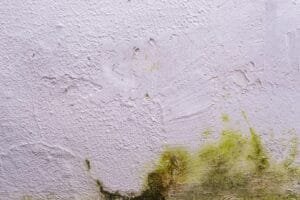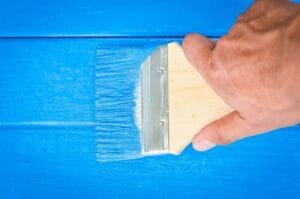Introduction to Anti-Fungal Wall Paints
Anti-fungal wall paints are specialized coatings developed to combat the growth of mold and mildew in indoor spaces. These innovative paints serve a significant purpose: to protect walls from moisture-related issues that could compromise not only the aesthetic appeal of a home but also the health of its occupants. Designed with specific formulations, these paints incorporate anti-fungal agents that inhibit the formation and spread of fungal spores, ensuring the longevity of the painted surface and contributing to a healthier living environment.
The benefits of using anti-fungal wall paints extend beyond mere aesthetics. They mitigate the harmful effects of mold and mildew, which can lead to respiratory problems, allergies, and other health concerns. By applying anti-fungal paints, homeowners can significantly reduce the risk of these health hazards while preserving the integrity of their interiors. Furthermore, these paints are often designed to be water-resistant, making them ideal for high-moisture areas such as kitchens, bathrooms, and basements where mold is most likely to flourish.
The science behind anti-fungal wall paints lies in their formulation. These paints typically contain biocides that actively target and destroy fungal spores as they attempt to colonize the painted surface. This proactive approach not only safeguards the walls but also reduces the need for frequent repainting, thus representing a cost-effective solution in the long run. In addition, many anti-fungal paints are now available in various finishes and colors, allowing homeowners to enhance both the functional and aesthetic dimensions of their spaces.
Overall, the adoption of anti-fungal wall paints is an essential strategy for maintaining a clean and healthy environment within a home. As we explore further into this guide, we will delve into the various types of anti-fungal paints available, their application techniques, and best practices for ensuring optimal performance. This comprehensive insight will empower homeowners to make informed choices when it comes to their interior painting needs, effectively protecting their living spaces from unwanted mold and mildew growth.

Understanding Mold and Mildew: The Need for Anti-Fungal Paints
Mold and mildew are common types of fungi that thrive in damp and humid environments. While often confused for one another, they have distinct characteristics. Mold, typically appearing in various colors such as black, green, or blue, tends to penetrate deeper into materials and is often a concern due to its potential to cause structural damage. Mildew, on the other hand, appears as a flat, powdery substance and is usually white or gray. While both fungi can be found indoors, their prevalence is especially pronounced in areas with high moisture levels.
The conditions conducive to the growth of mold and mildew typically include elevated humidity, poor ventilation, and inadequate sunlight. Bathrooms, basements, and kitchens are prime locations where these fungi can flourish. Once established, mold and mildew can lead not only to unsightly stains and odors but also to health risks for inhabitants. Prolonged exposure to mold spores may trigger allergic reactions, respiratory problems, and other serious health issues, particularly in sensitive individuals such as young children, the elderly, or those with pre-existing respiratory conditions.
Given the risks associated with mold and mildew, it is crucial to implement preventative measures in homes, especially in areas prone to dampness. This is where the importance of anti-fungal wall paints becomes evident. Mithila paints and similar products incorporate specialized biocides that inhibit fungal growth, thereby offering a protective barrier against mold and mildew. Selecting a quality anti-fungal paint not only helps in maintaining the aesthetic appeal of a home but also significantly reduces the potential for health hazards related to moisture-related fungal growth. By choosing such paints, homeowners can create a safer and healthier living environment.
Types of Anti-Fungal Wall Paints
In the realm of home maintenance, selecting the appropriate anti-fungal wall paints is essential to safeguard your living space from mold and mildew. These paints are typically categorized into several types, each catering to various needs and environments.
One common classification includes water-based anti-fungal paints. These formulations are favored for their easy application and quick drying times. Water-based paints are generally low in volatile organic compounds (VOCs), making them better for indoor air quality. They are perfect for interior walls, especially in low-traffic and non-moisture-prone areas, but may require more frequent reapplication compared to their oil-based counterparts.
On the other hand, oil-based anti-fungal paints offer durability and superior adhesion. They are particularly effective in high-moisture areas such as kitchens and bathrooms, where they provide a robust barrier against fungal growth. However, oil-based options tend to release higher levels of VOCs, thus necessitating proper ventilation during application and drying. Their longer drying time is another consideration one must take into account.
Moreover, there are paints specifically formulated for high-moisture environments. These products often contain mildewcide or fungicide additives, enhancing their protective qualities. Such formulations are commonly found in paints labeled for bathrooms or kitchens, where moisture is prevalent. They effectively inhibit the growth of mold and mildew, but it is essential to confirm that these paints are suitable for the respective surfaces to ensure optimal performance.
Ultimately, each type of anti-fungal wall paint has its unique advantages and disadvantages. By understanding these distinctions, homeowners can make informed decisions tailored to their specific needs, effectively utilizing mithila paints where appropriate and employing the right types of protective coatings to maintain a healthy living environment.



Key Ingredients in Anti-Fungal Paints
Anti-fungal wall paints are specifically formulated to combat moisture-related issues in residential and commercial spaces, particularly the growth of mold and mildew. The efficacy of these paints largely depends on their active ingredients, which typically include biocides and mildewcides. These compounds serve the primary purpose of inhibiting the proliferation of fungi, thus providing a protective barrier for your walls.
Biocides are agents that destroy or inhibit the growth of living organisms, including fungi. In the context of anti-fungal wall paints, biocides disrupt the cellular mechanisms of fungal cells, effectively reducing their ability to reproduce and thrive. Common biocides found in these paints encompass compounds such as zinc pyrithione and sodium omadine, which have proven effective in diminishing fungal growth on various surfaces.
Mildewcides are another critical ingredient in the formulation of anti-fungal paints. These substances are designed explicitly to target molds and mildew. Mildewcides function by releasing sporicidal and fungicidal properties that interfere with the metabolism of fungi, thereby preventing their growth. It is essential to choose anti-fungal paints that include verified mildewcides to ensure long-lasting protection.
In recent years, the demand for eco-friendly products has spurred advancements in low-VOC (volatile organic compounds) anti-fungal paints. These formulations not only provide the same protective qualities against fungal growth but also minimize the release of harmful chemicals into the environment. Many manufacturers now offer mithila paints and other environmentally safe alternatives, catering to consumers who are keen on sustainable living without compromising on effectiveness.
Understanding these key ingredients is essential for making informed decisions when selecting anti-fungal wall paints for your home or workspace. Their unique functionalities enhance the protective capabilities of the paint, ensuring a healthier indoor environment free from mold and mildew.
How to Choose the Right Anti-Fungal Paint for Your Needs
When selecting an anti-fungal wall paint, it is crucial to consider several factors to ensure the product aligns with your specific requirements and effectively combats mold and mildew. One of the primary considerations is the type of room where the paint will be applied. For instance, areas such as bathrooms and kitchens typically experience higher levels of humidity, making it essential to choose a paint designed specifically for high-moisture environments. In such cases, look for paints that offer enhanced moisture resistance and antibacterial properties to protect against microbial growth.
Another significant factor to consider is the existing wall condition. Before applying an anti-fungal paint, assess the state of your walls. If there is existing mold or mildew, it is critical to address this issue before painting. Clean the walls thoroughly with a mold-killing solution, and if necessary, repair any damage to the surface. For best results, choose a high-quality primer designed for mold prevention as a base layer, which can further enhance the efficacy of the topcoat anti-fungal paint.
Moreover, you should evaluate the humidity levels in your home. In regions with high humidity, it is advisable to select a premium anti-fungal paint that offers long-lasting protection against mold and mildew. These specialized paints incorporate ingredients that inhibit fungal growth, ensuring a healthier living environment. Additionally, pay attention to the paint’s finish; satin or semi-gloss finishes are typically more resistant to moisture absorption compared to flat finishes.
Ultimately, finding the right anti-fungal paint is about understanding your environment’s specific needs. By carefully considering the type of room, humidity levels, and current wall conditions, you can confidently choose a product that not only enhances the aesthetic appeal of your home but also provides essential protection against mold and mildew, such as mithila paints tailored for such purposes.

Application Process: Tips and Techniques
Applying anti-fungal wall paints, such as mithila paints, requires careful attention to surface preparation and execution to ensure maximum protection against mold and mildew. Before starting, ensure the working area is clean and well-ventilated, as this will enhance the painting experience and expedite drying times. The surface must be thoroughly cleaned and any remnants of old paint, dirt, or mold should be removed. Utilizing a high-quality mold remover can be effective for treating existing infestations. Following this, rinse the area with water and allow it to dry completely before proceeding.
For optimal adhesion and coverage, rough surfaces should be sanded down. This not only facilitates better integration of the mithila paints but also promotes a smoother finish. If the wall has previously been painted, a coat of primer specifically designed for anti-fungal properties is recommended. This step enhances the performance of the topcoat and ensures long-lasting protection against future mold growth.
When it comes to tools, ensure you have high-quality brushes, rollers, or sprayers suitable for the paint type you are using. Brushes typically work well for edges and detailed areas, while rollers can cover larger surfaces more effectively. If using a sprayer, familiarize yourself with the equipment for even distribution of the anti-fungal wall paint. A paint tray should also be utilized for efficiency in application.
When applying mithila paints, begin from the top and work your way down, using consistent strokes. It is advisable to apply two coats for the best result, allowing sufficient drying time between layers as specified by the manufacturer. Pay attention to corners and high-moisture areas, ensuring those sections receive ample coverage. This methodical approach will significantly improve the endurance and efficacy of the anti-fungal protection, ultimately safeguarding your home from the adverse effects of mold and mildew.
Maintenance and Longevity of Anti-Fungal Paints
Maintaining the effectiveness and lifespan of walls painted with anti-fungal paints is crucial for preventing the growth of mold and mildew in your home. These specialized paints, such as mithila paints, are designed to inhibit fungal growth, but regular maintenance is key to ensuring they continue to perform optimally. One of the primary aspects of maintenance involves the cleaning of painted surfaces to remove dust, dirt, and any organic growth that may accumulate over time.
For routine cleaning, it is recommended to use a damp cloth or sponge with mild detergent. Avoid using harsh chemicals, as they can damage the anti-fungal properties of the paint. In areas that are particularly susceptible to moisture, like bathrooms and kitchens, you may want to clean these surfaces more frequently—ideally every few weeks—to ensure that mold spores do not settle. Additionally, during high humidity months, conduct more thorough inspections of your walls and ceilings, especially in corners and behind furniture, where moisture might linger.
Reapplication of anti-fungal paints might be necessary over time, again depending on the level of wear these surfaces experience. Generally, high-traffic areas or those exposed to moisture should be evaluated for reapplication every 5 to 7 years. However, if you notice signs of peeling, discoloration, or a resurgence of mold, it might be a good idea to reapply even sooner. When doing so, consider using top-quality brands like mithila paints that are known for their durability and effectiveness in mold prevention.
Ultimately, diligent maintenance and timely reapplication ensure that your walls remain resistant to mold and mildew, protecting your home and enhancing the longevity of the anti-fungal paint used.

Environmental Impact and Safety Considerations
The use of anti-fungal wall paints, including those inspired by traditional mithila paints, raises important discussions about environmental impact and safety. These paints are formulated to prevent the growth of mold and mildew, which can pose significant health risks in indoor environments. However, the components used in these paints can also have implications for overall indoor air quality.
Many anti-fungal paints contain chemicals that may emit volatile organic compounds (VOCs). When these paints are applied, the VOCs can evaporate into the air, leading to a range of potential health issues such as headaches, respiratory problems, and skin irritation, particularly in poorly ventilated areas. It is essential for consumers to select low-VOC or zero-VOC options to mitigate these adverse effects. Taking inspiration from traditional mithila paints, which often utilize natural, non-toxic pigments, there is a growing trend toward eco-friendly formulations that protect both the user and the environment.
Moreover, the manner in which these paints are applied also warrants caution. Proper ventilation during and after application is vital to maintaining indoor air quality. Installers should wear appropriate protective gear to avoid direct skin contact and inhalation of fumes. These safety precautions not only protect the individual applying the paint but also help ensure a healthier living space in the long term.
In addition to personal safety, the environmental footprint of manufacturing and disposing of these paints must be considered. Selecting products that are environmentally responsible, such as those embodying principles similar to mithila paints—characterized by their use of sustainable resources—can contribute to a reduced ecological impact.
In summary, while anti-fungal wall paints serve a vital purpose in maintaining a healthy indoor environment, understanding their safety considerations and environmental consequences is essential for making informed choices. Selecting low-VOC options and adhering to proper handling protocols are crucial steps in promoting safer practices. Consistently evaluating the use of eco-friendly ingredients can also contribute positively to both home environments and the wider ecological landscape.
Conclusion: Ensuring a Healthy Living Space
In summary, maintaining a healthy living environment is paramount for the well-being of every household. One indispensable aspect of achieving this goal lies in the use of anti-fungal wall paints, such as mithila paints, which not only serve an aesthetic purpose but also offer robust protection against mold and mildew. Throughout this guide, we have explored the potential risks associated with mold growth, including health issues and structural damage. Recognizing these threats underscores the necessity of proactive measures in interior design and home maintenance.
Various factors contribute to the prevalence of mold, particularly humidity and moisture. Anti-fungal paints can effectively mitigate these conditions, as they create a barrier that inhibits fungal growth. The incorporation of mithila paints into your living spaces can transform not only the appearance of your walls but also their functionality. It is essential to choose paints that are specifically designed to combat mold, ensuring they are made with ingredients that provide long-lasting protection while being environmentally friendly.
By selecting high-quality anti-fungal paints, homeowners can take a significant step toward safeguarding their living spaces. This proactive approach to home maintenance is not just about prevention but also about fostering a healthier atmosphere for families. The mindful application of these paints during renovations or regular upkeep will yield benefits that last for years. Adopting this practice is not merely a choice; it is an investment in the health and well-being of those who reside in the home.
Ultimately, the value of using anti-fungal wall paints, particularly options like mithila paints, cannot be overstated. By prioritizing the health of your living environment, you are not only enhancing the aesthetics of your home but also ensuring a safe and healthy future for you and your loved ones.

